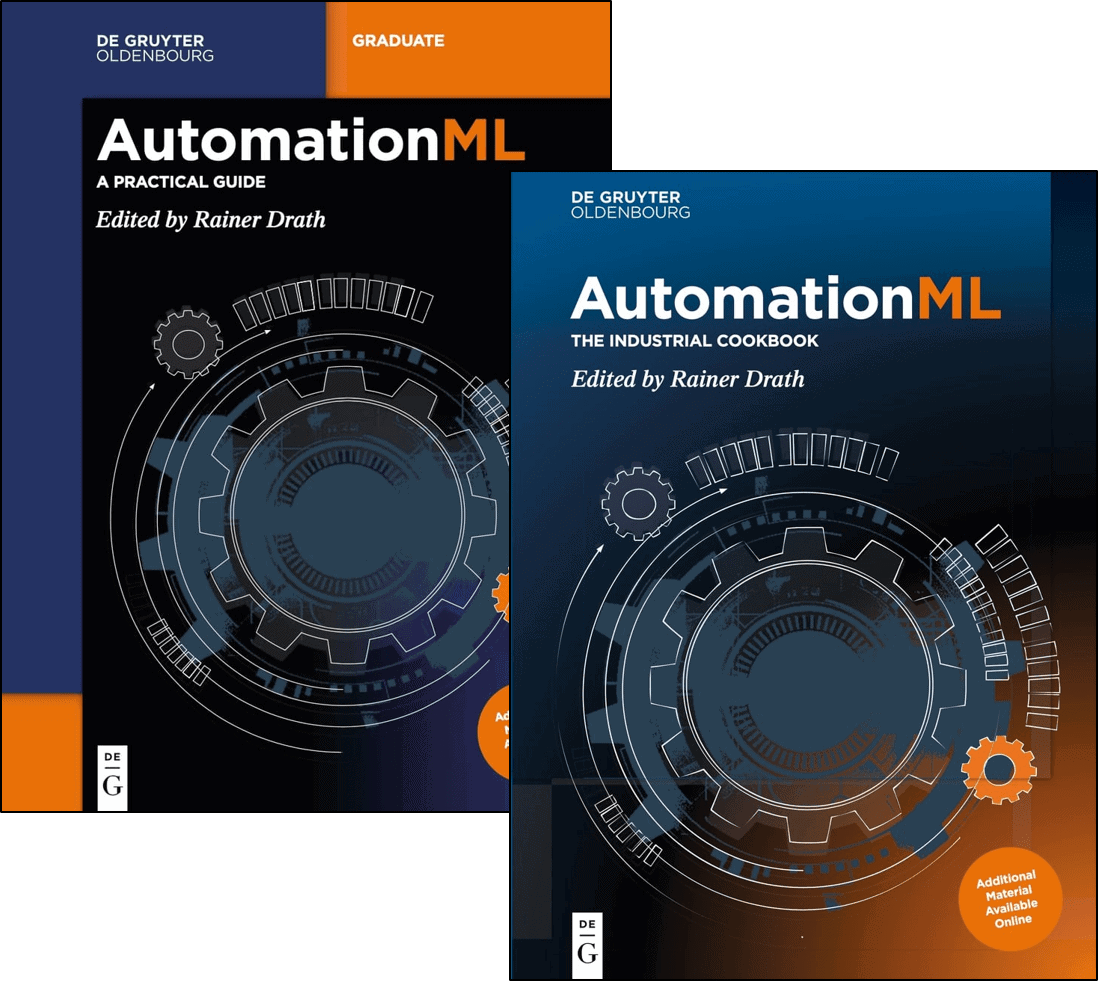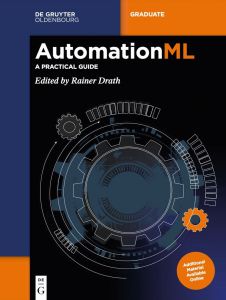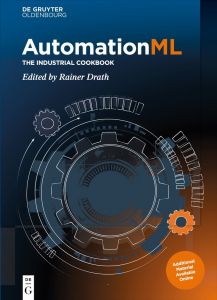
The new books on AutomationML are now available from the publisher DeGruyter. Many thanks to Rainer Drath and all the co-authors for the work they have done to make this project possible.
The special thing about it: in order to take into account the development so far, two separate books for corresponding groups of people were created. But that’s not all, in order to also let you participate in the future development, you will find additional information, examples and models here on our website for the books.
AutomationML – A Pratical Guide
This book is a beginner’s guide to AutomationML Edition 2, written for students, engineers, lecturers, developers and those interested. In guides through the basics of AutomationML, CAEX and the AutomationML Editor. This book carefully introduces AutomationML and explains its goals, values and innovations and teaches the architecture of AutomationML and explains the language elements with a multitude of examples and step-by-step instructions.
- A comprehensive guide through AutomationML for beginners
- The first textbook about CAEX and AutomationML
- For students, researchers, developers and lecturers
- With many hand-on examples
- Examples and source code are available online for download

AutomationML – The Industrial Cookbook
This book provides a comprehensive in-depth look into the practical application of AutomationML from an industrial perspective. It is a cookbook for advanced users and describes re-usable pattern solutions for a variety of industrial applications and their implementation in software. Just to name some: AutomationML modelling of AAS, MTP, SCD, OPC UA, Automation Components, Automation Projects, drive configurations, requirement models, communication systems, electrical interfaces and cables, or semantic integration aspects as eClass integration or handling of semantic heterogeneity. Recipe by recipe, this cookbook guides through the universe of AutomationML from an industrial point of view, written by AutomationML experts who have industrially implemented AutomationML for a variety of applications. It is divided into three major parts.
- Part I: software implementation for developers
- Part II: re-usable industrial pattern solutions and domain models
- Part III: outlook into future AutomationML applications
